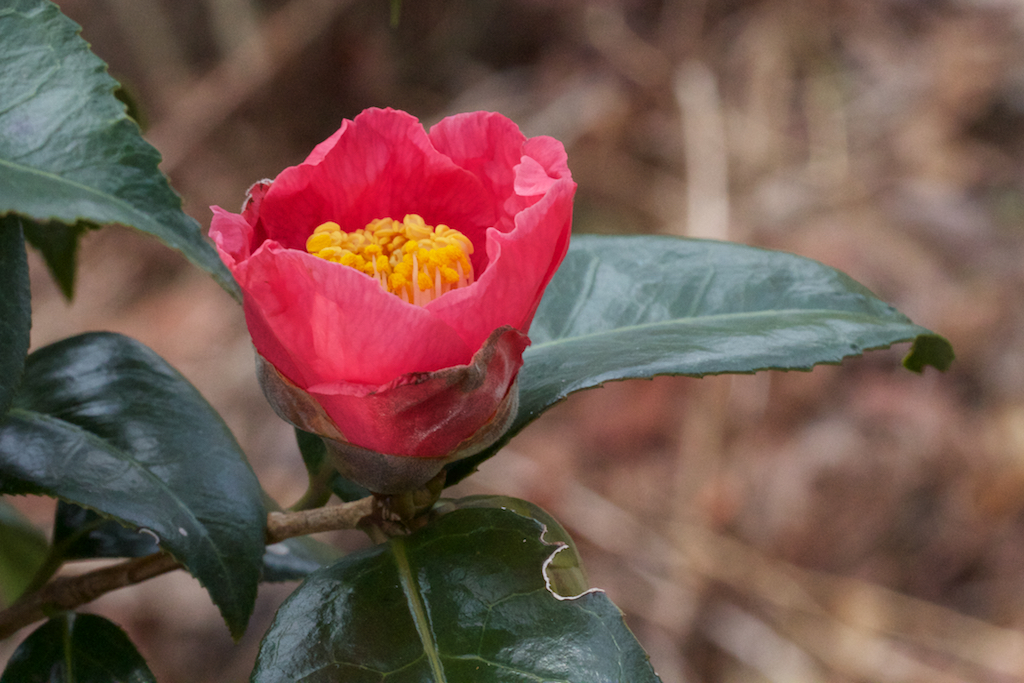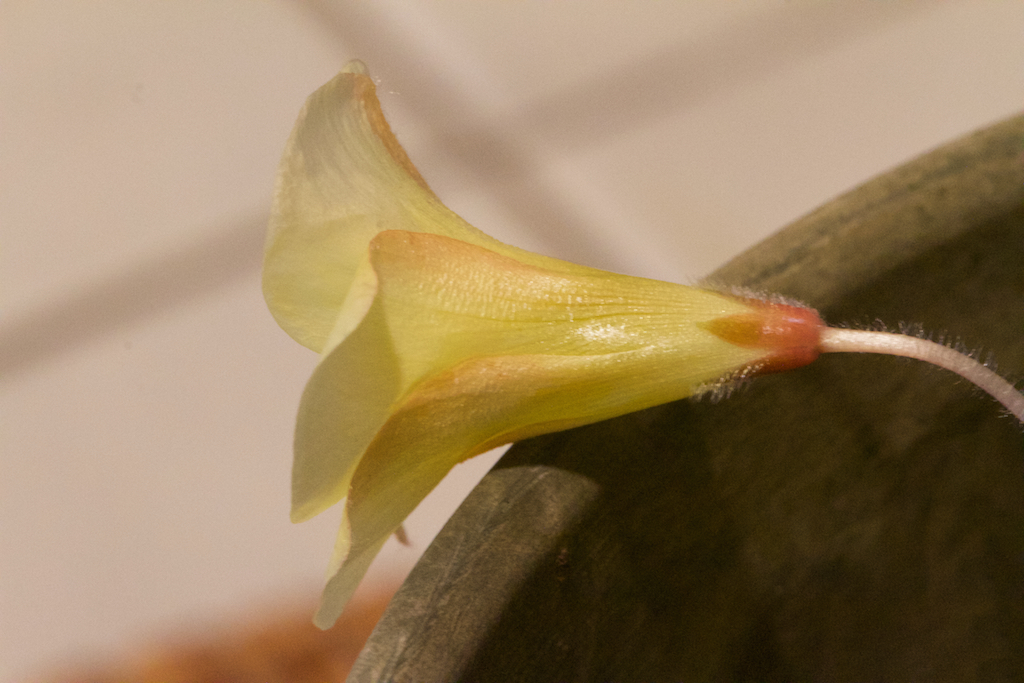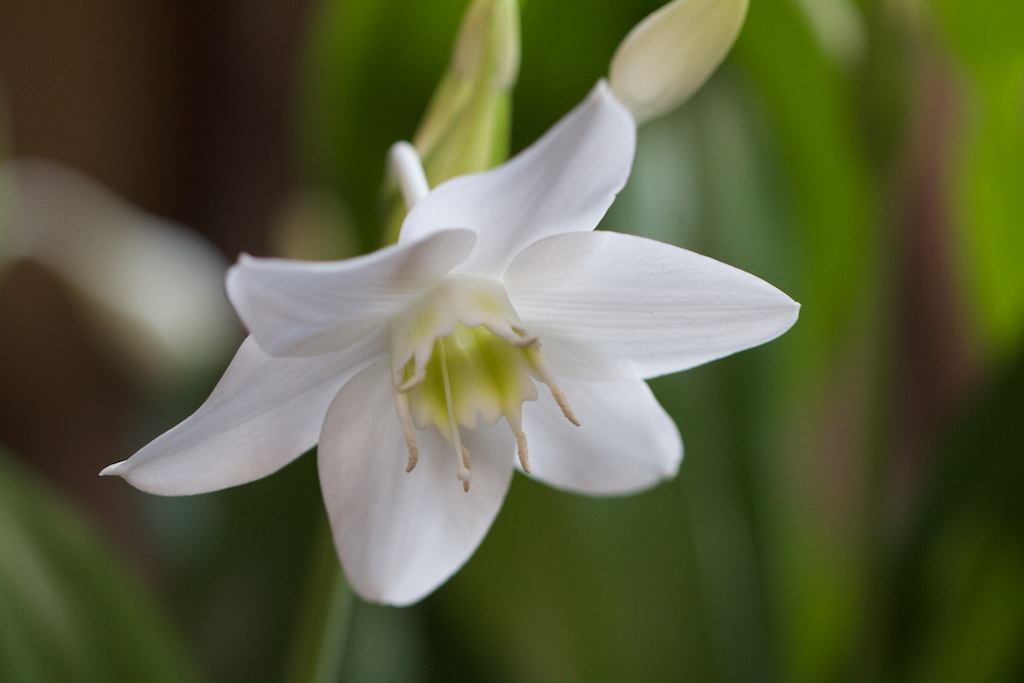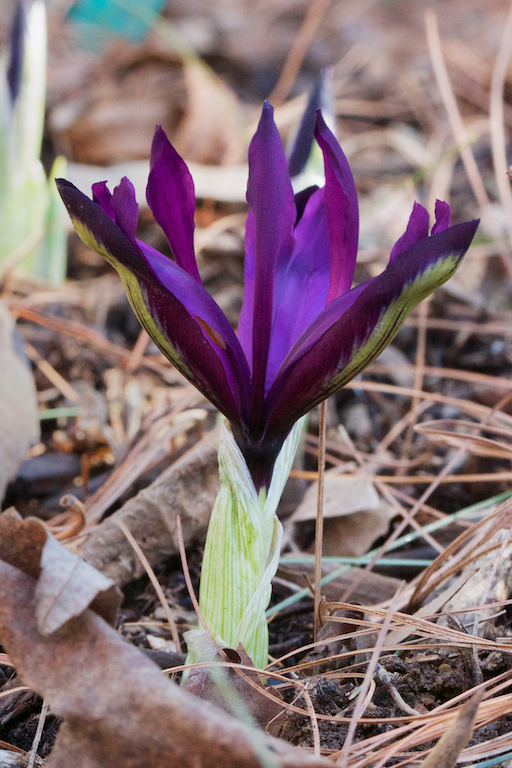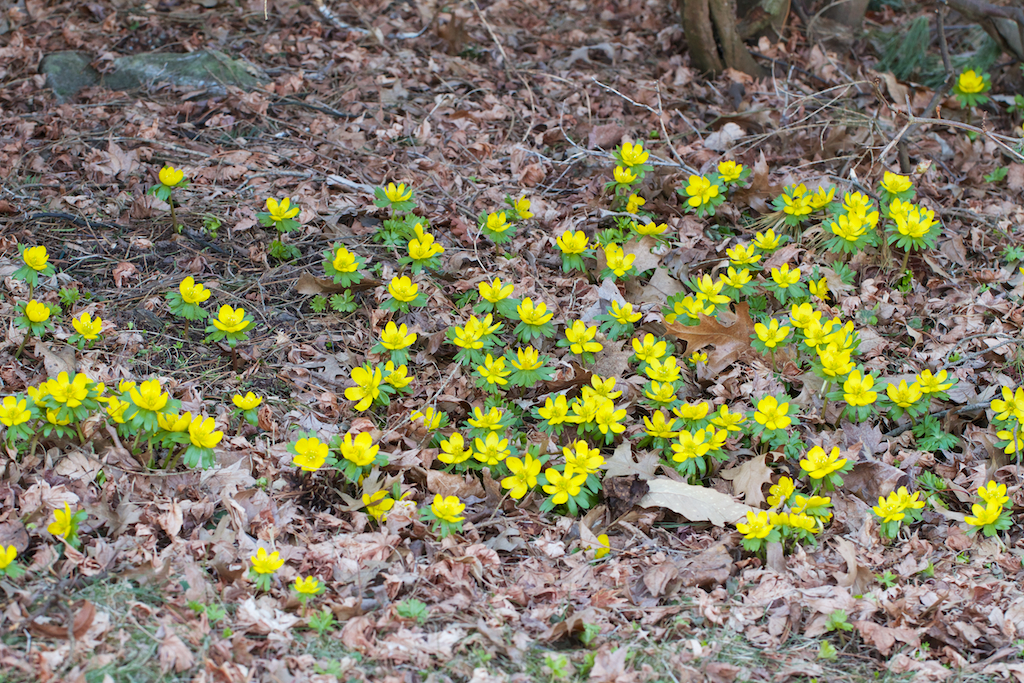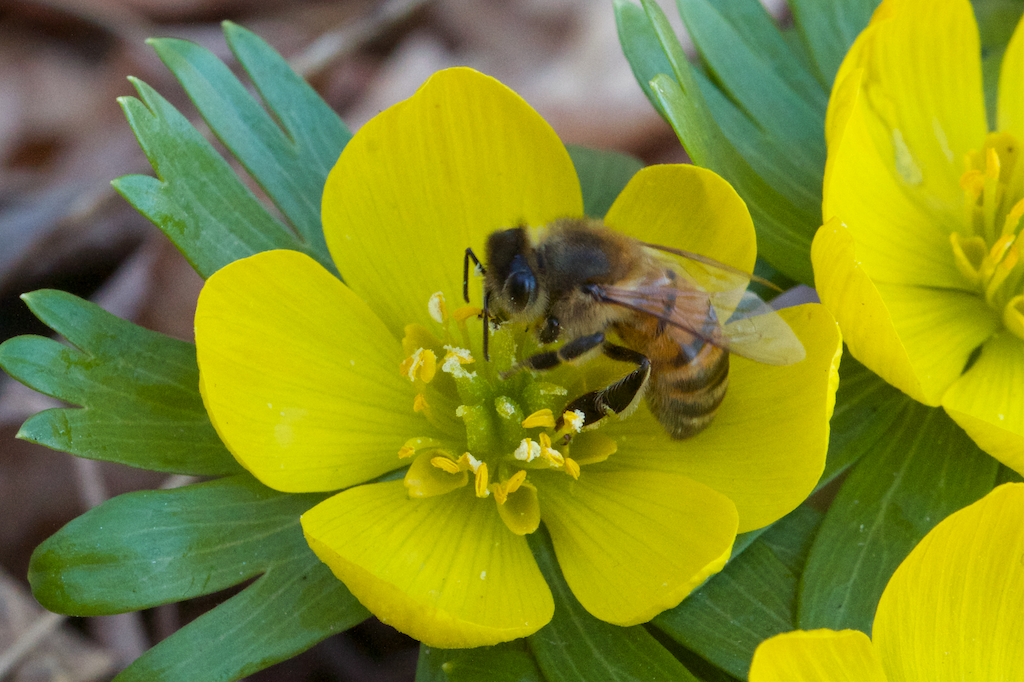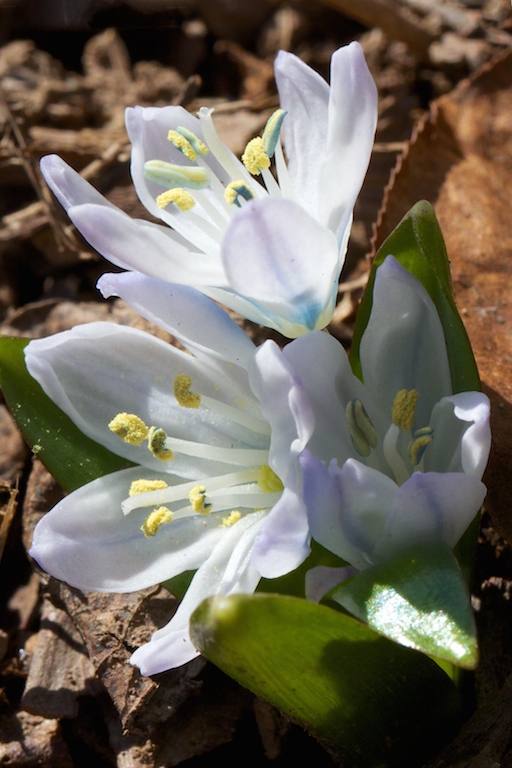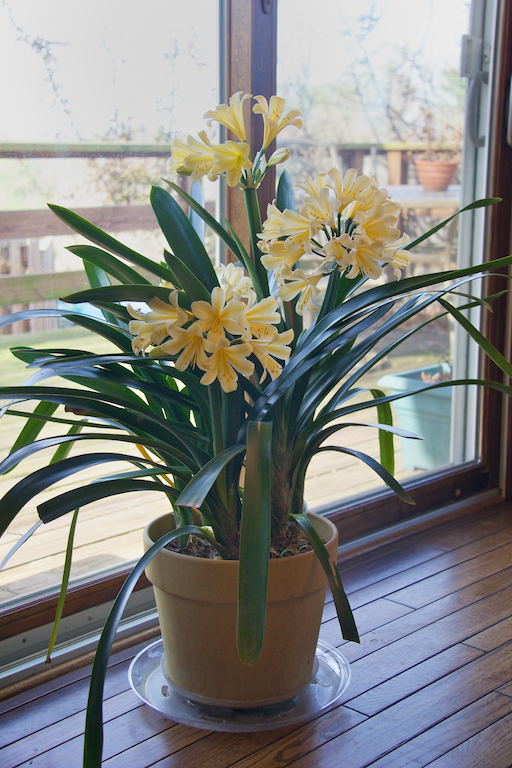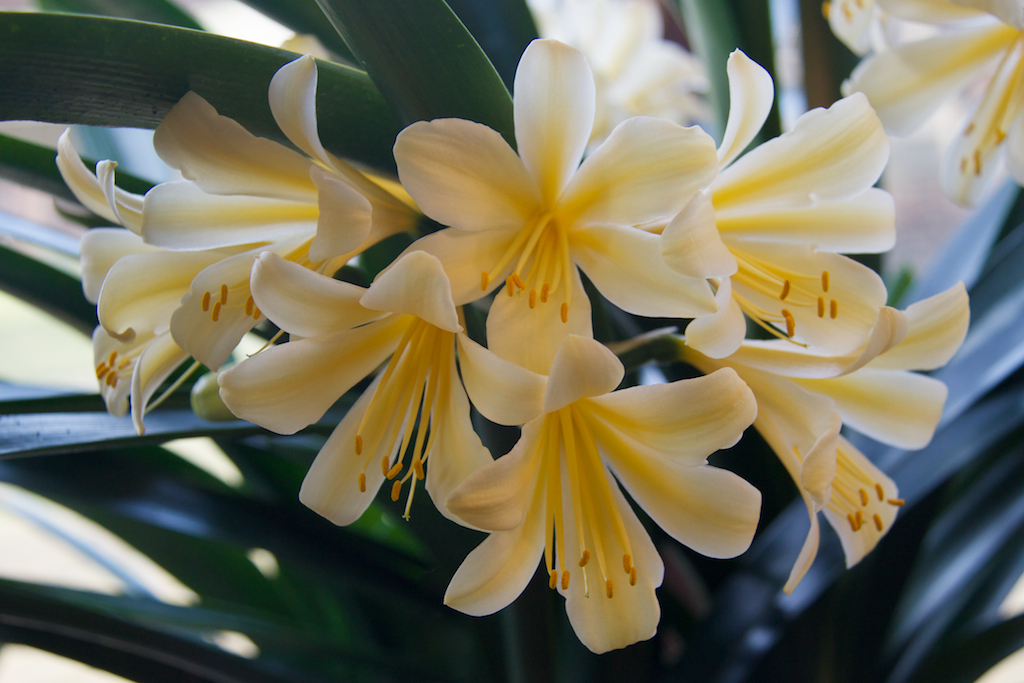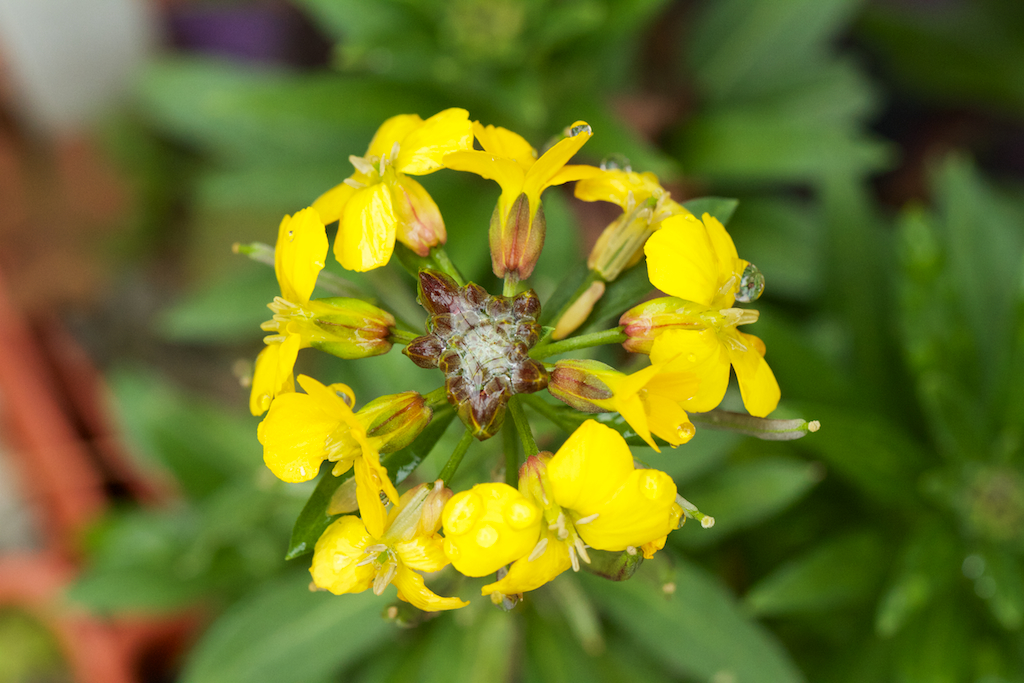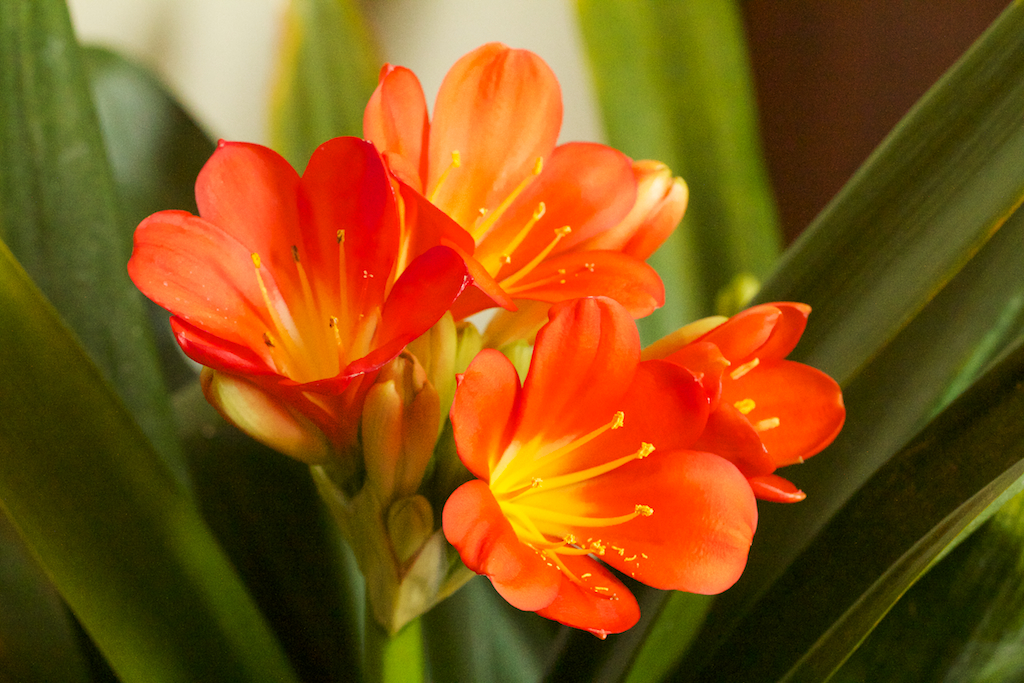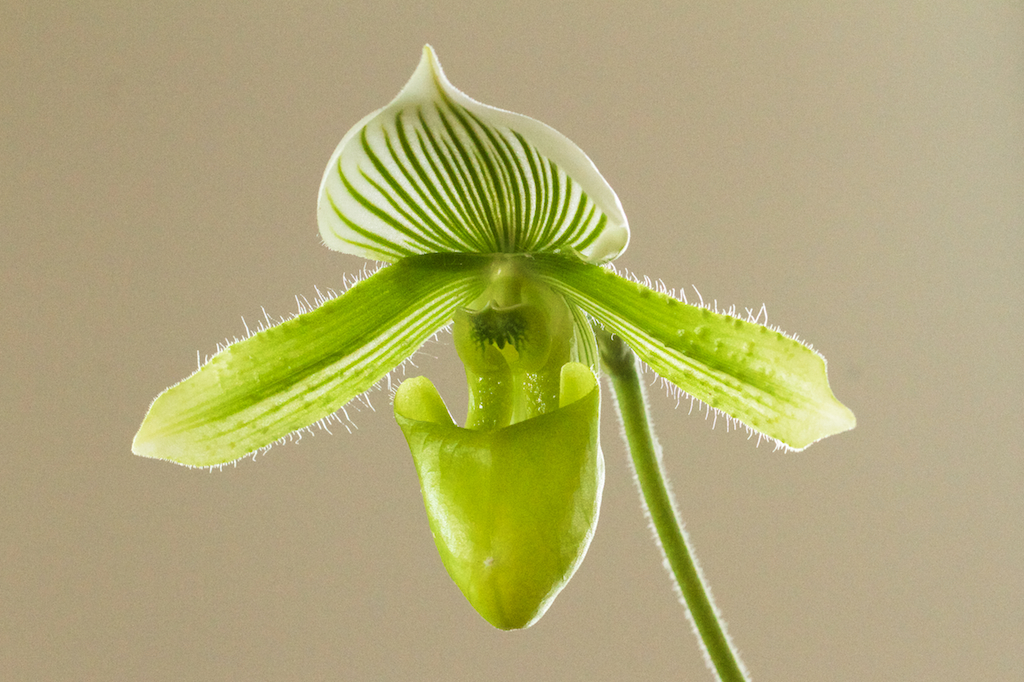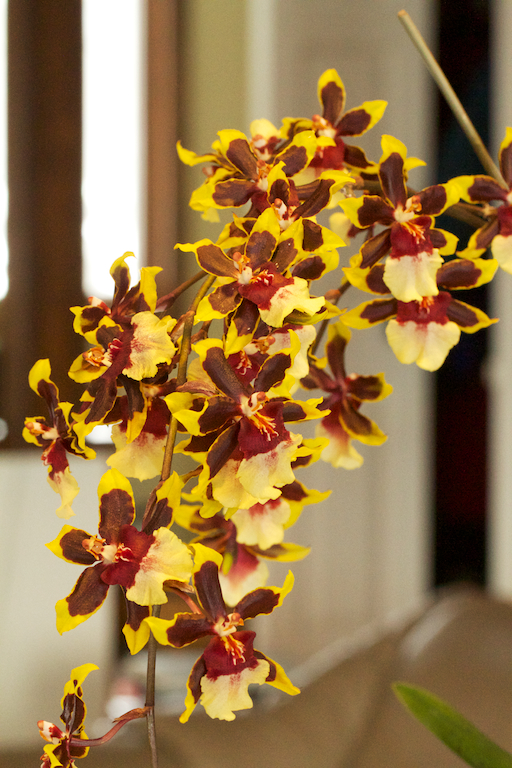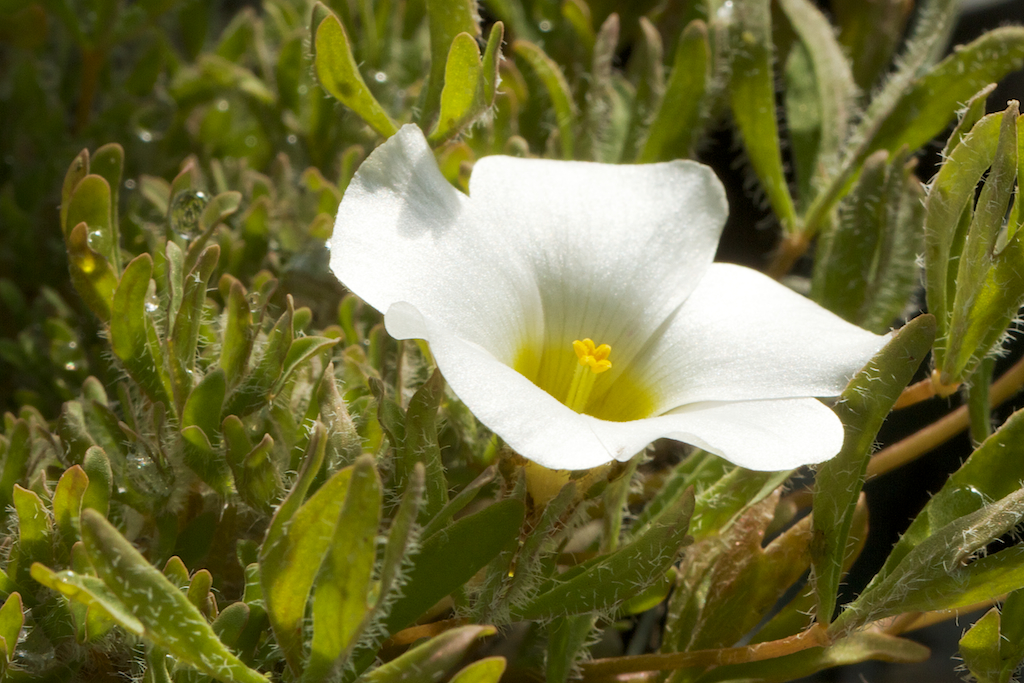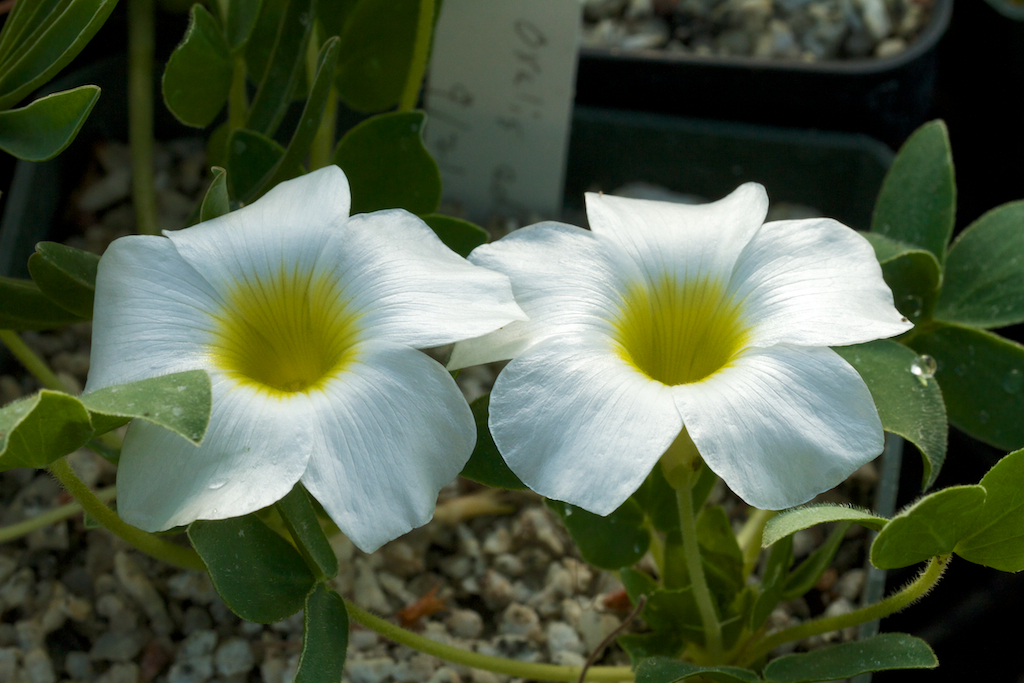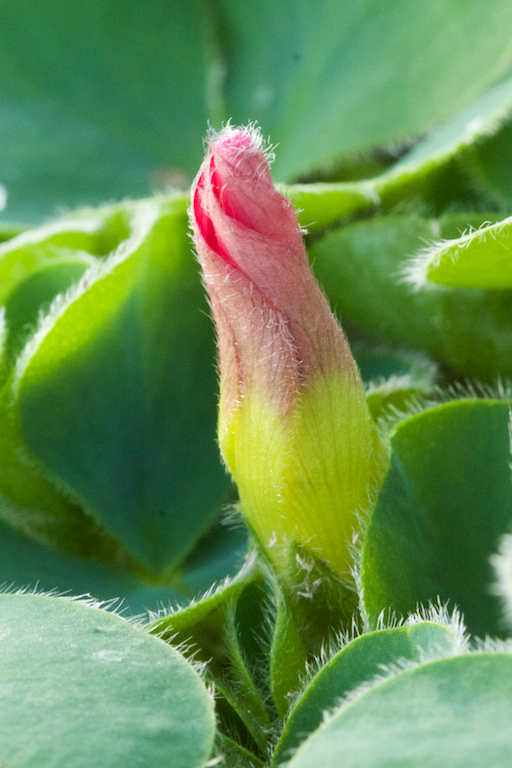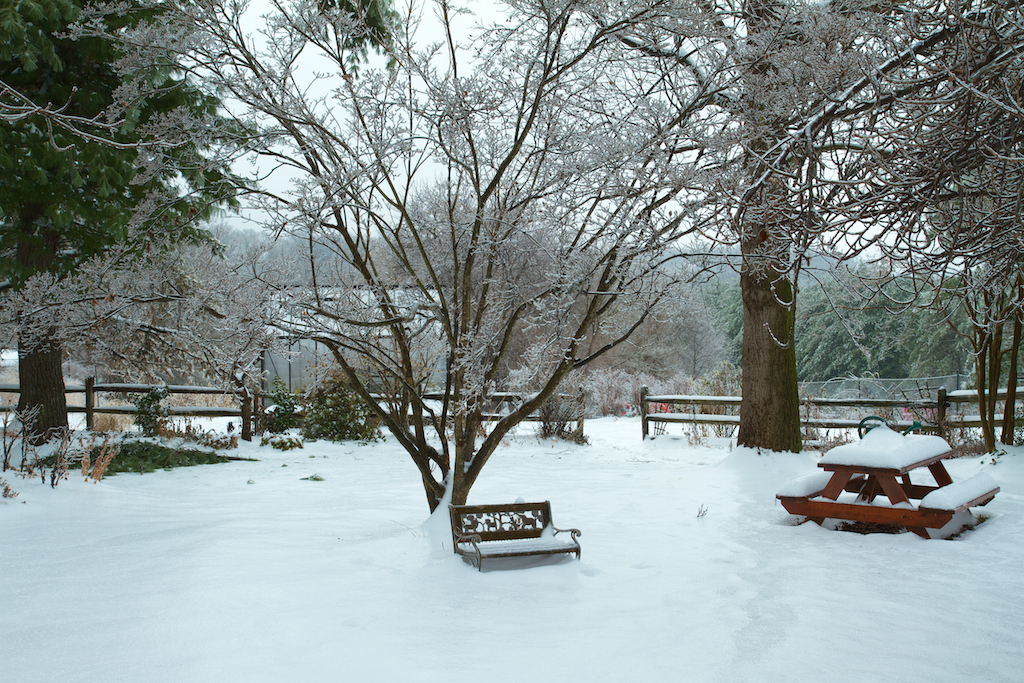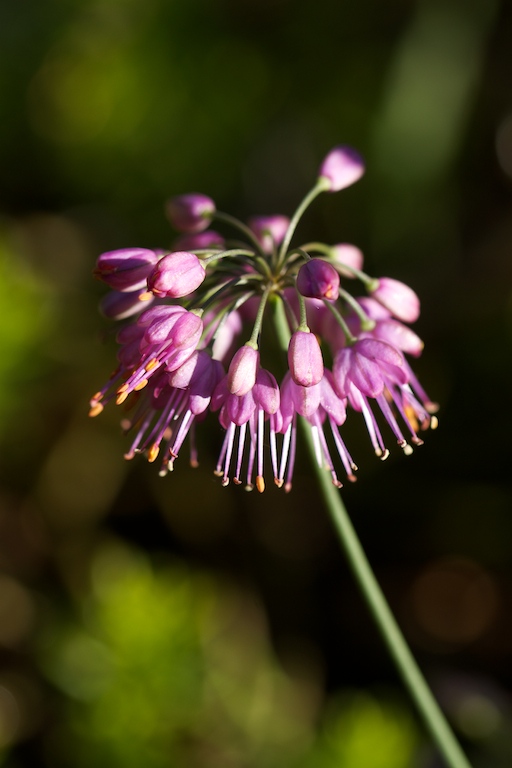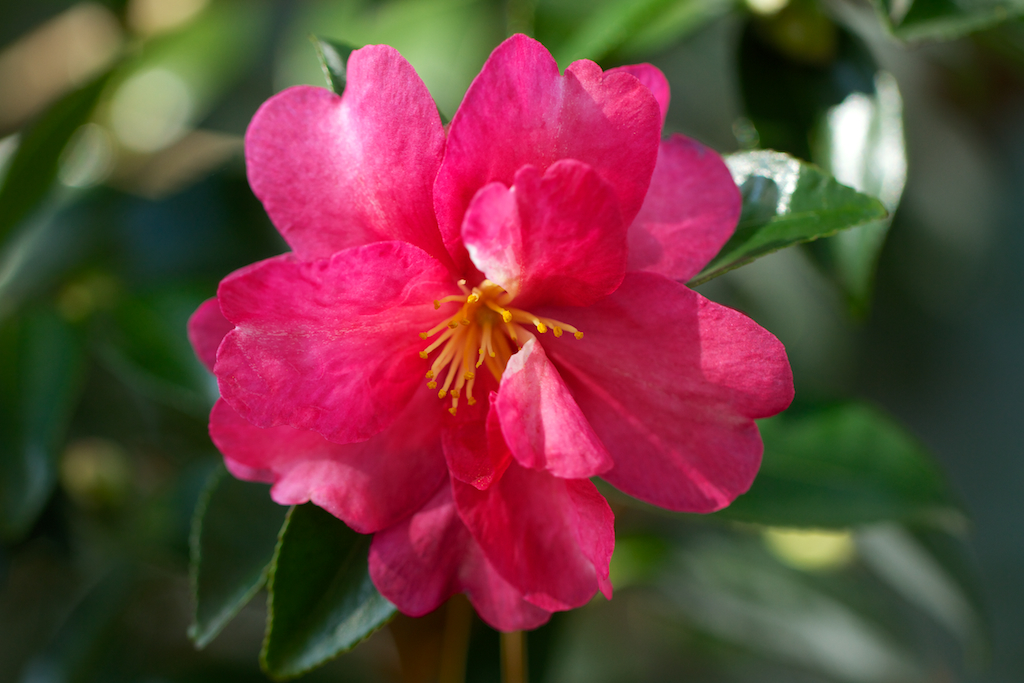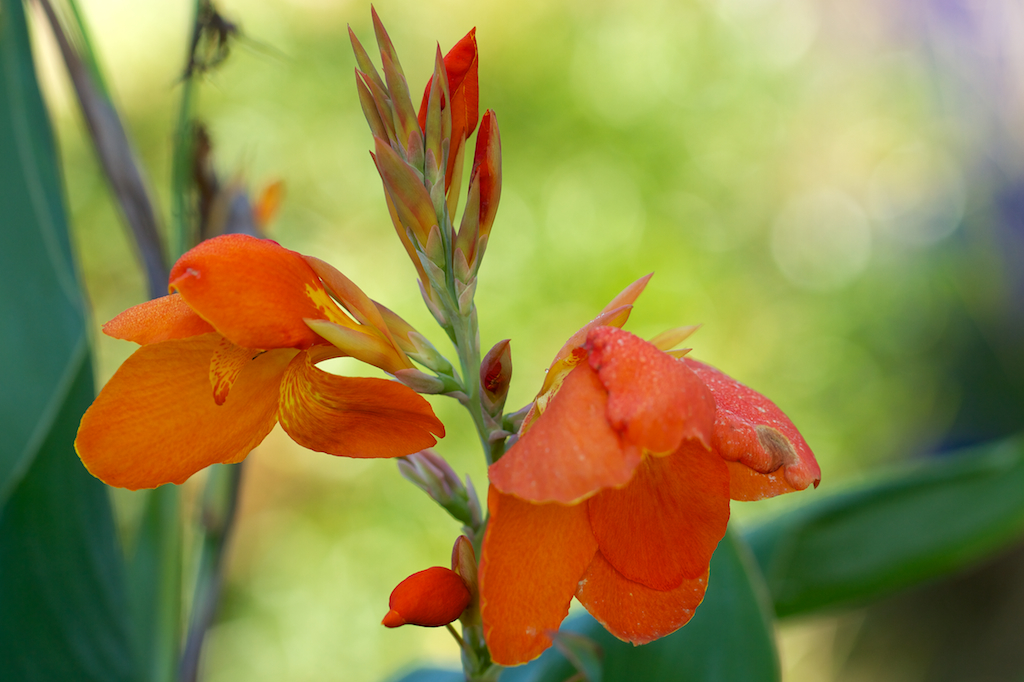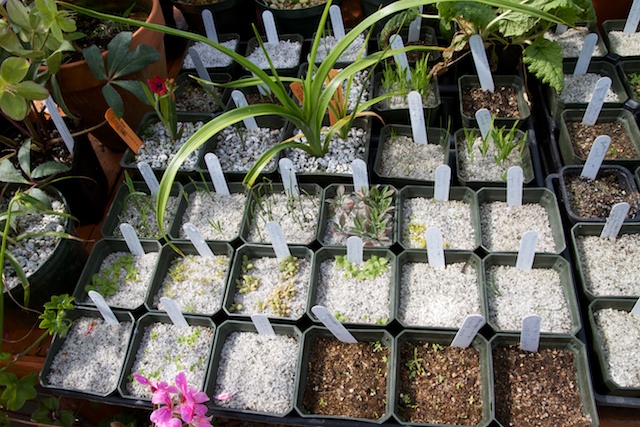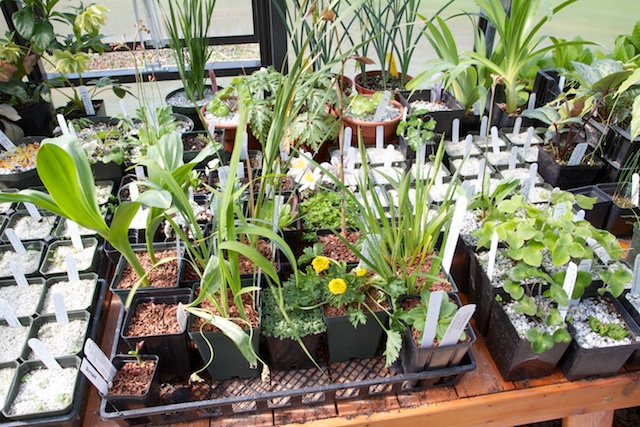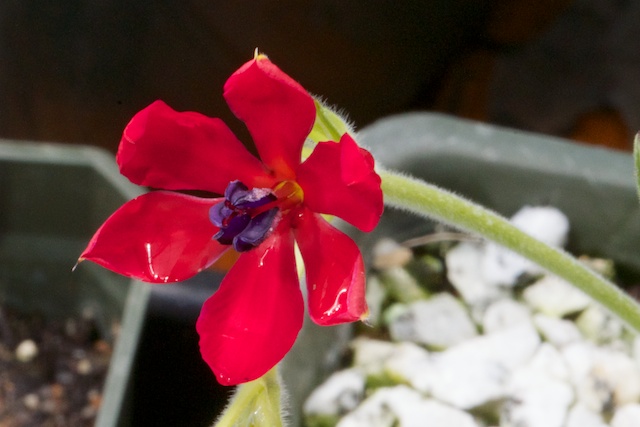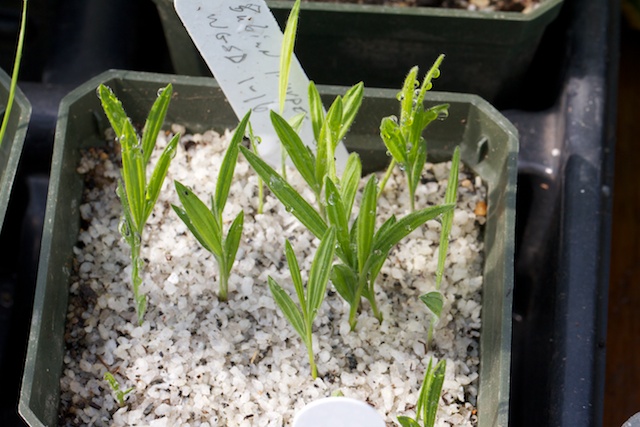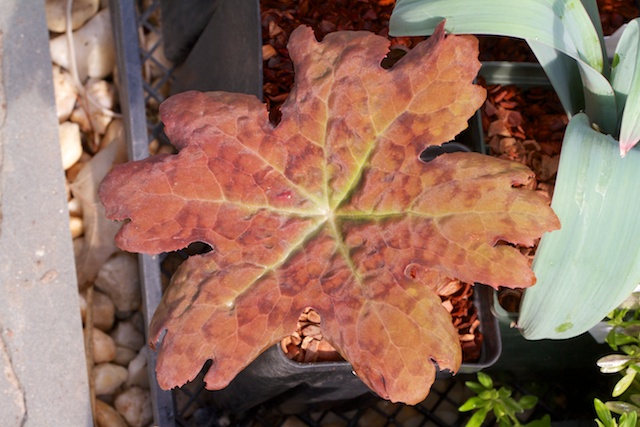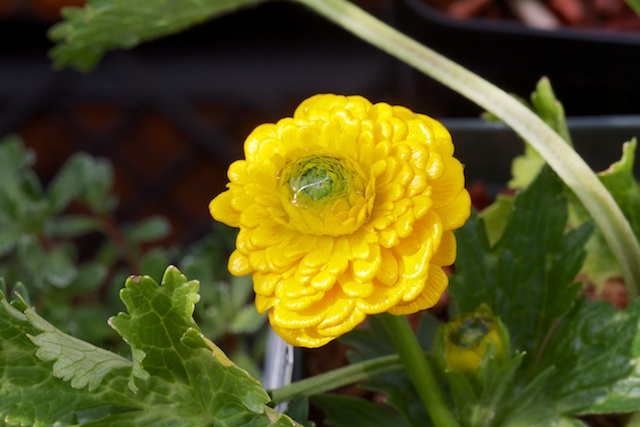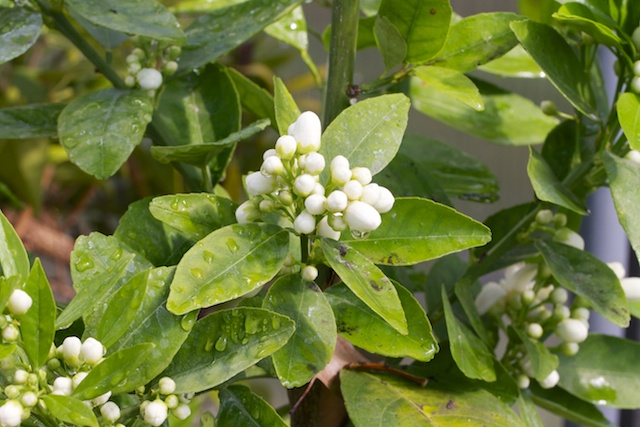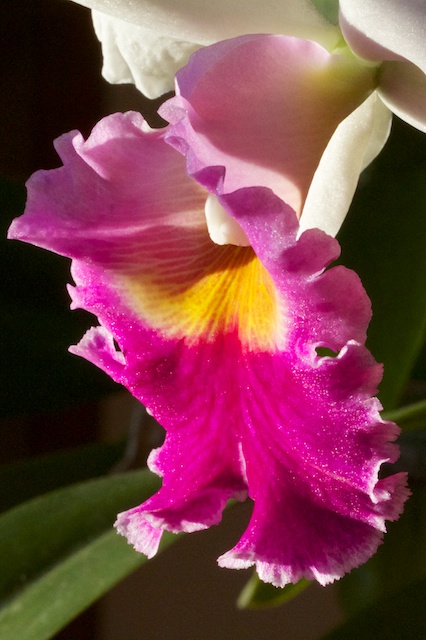Well I have been long overdue for posting. Seasonal illness, much travel, and many chores have kept me from my recording of events on Ball Rd. What better way to get into the swing of things again that to take note of what is blooming around here on a cold December day for GBBD. I was surprised to see that the blooming camellia in the yard is not one of the fall camellias (they are often quite showy right about now) but instead the rather lovely Camellia japonica ‘April Tryst’ that is one of the new cold-hardy varieties from Camellia Forest.
The camellias are all showing a lot of buds that should provide a real show if we have a better winter than last year.
A reliable contributor for this season is the christmas rose, Helleborus niger ‘HGC Jacob’.
This is the starting point for a hellebore season that will go from now until April-May. What a marvelous plant! At some point I will have to cut away the leaves from last year’s growth, but at the moment they are still green and very pretty for December.
Some years ago we were traveling in England and noticed how the aubretia was often cascading over stone walls to great effect. One of my first thoughts in constructing the alpine bed that is enclosed by a two foot high stone wall was to put some aubretia in and let it cascade over the wall. Well half of that idea worked in that the aubretia is thriving in the alpine bed and even blooming already for the spring, but it seems to think that the idea of cascading over the wall is foolish when there is a whole bed to spread out in first.
This may take some rethinking after we’ve gotten the springtime bloom.
In the greenhouse we have a few oxalis still blooming, a couple of lachenalia, and some small narcissus.
A loss of power on one night in November took the greenhouse temperature down to 28 degrees. Most things survived but we did lose some of the oxalis flowers.
The house also has some flowers to contribute to the scene. In particular the orchids have started their parade. We take the orchids outside for the summer and then when we bring them in for winter they begin flowering one by one.
I am always amazed by the fragrance of the cattleyas. How can one plant have such incredible beauty and fragrance as well?
Also flowering right now is the amazon lily which seems to thrive on being pot-bound. I don’t believe we have ever transplanted it and I don’t remember ever adding fertilizer.
Like the orchids it lives on the shady porch in the summertime and then flowers when it comes in for the winter. The difference is that it often flowers in July as well.
Lastly, given the season, I want to share the colorado blue spruce which has come inside for the holidays.
May your homes and gardens overflow with joy…
It’s Spring All Over Again
I was surprised to see that a little pot of Lewisia pygmaea seedlings was flowering even though I think of Lewisia as spring flowering plants. But a little research showed that indeed they can flower again in the fall after being dormant in the summertime. The odd thing here is that this is the first bloom for these plants. They only just germinated this spring from seeds distributed by the Alpine Garden Society in 2013. And there are no such flowers on the plants in the alpine bed which flowered wonderfully this spring. Anyway I’ll enjoy them as a little bit of spring in the fall.
The greenhouse is producing the other pronounced springtime right now. All those plants that happily produce wintertime flowers are putting up green shoots like mad and some are even flowering. The oxalis caught me off-guard with their rapid growth. I dimly remembered planting them in early September last year, but that is clearly too late. This is what some of the new acquisitions looked like when I pulled them out of their bag.
And the plants that I had moved to basement to spend a dormant summer were growing vigorously, regardless of having neither water or light. Needless to say I will be more aware next year. Anyway, I potted the new ones up and brought the old ones from the basement. And in a little more than two weeks they are growing vigorously.
Oxalis caprina was the first to flower, even though it was just planted from a bulb. It’s small and a bit scraggly as a plant but like all the oxalis it’s flower is worth looking at closely. Second on the scene is Oxalis polyphylla v. heptaphylla.
In this case it is from one of last year’s pots. The flowers are somewhat larger than the Oxalis caprina. Many more varieties are on the way.
Altogether I count more than 35 different kinds of oxalis at this point, mostly from the Pacific Bulb Society bulb exchange and Telos Rare Bulbs.
The oxalis have lots of friends and neighbors that are sprouting too. The Ferrarias, Moraeas, Babianas, and Lachenalias are all coming along rapidly.
So you can see that I am actively contemplating the greenhouse in bloom but the outside is still filled with fall pleasures. I’ll leave you with an image of Chrysanthemum abundance.
Garden Blogger’s Bloom Day March 2014
Well, I’m late with posting this month for Garden Blogger’s Bloom Day, but the flowers have been popping out and I’ve been enjoying the outside for a change. The Iris above is part of hundreds of bulbs that were added to the new Monolith garden last fall. So far this the first one to flower besides the snowdrops and winter aconite. Out in the front yard the winter aconite continue to spread, even creeping into the grass.
These all started with just a handful of bulbs. They individually very pretty but as a mass they are striking. Even the early bees are appreciative.
Anyone who is curious about Eranthis should see the January issue of the International Rock Gardener, which was dedicated to Eranthis. If you are not familiar with the IRG it an online resource on the Scottish Rock Garden Club site with spectacular images and descriptions of unusual flowers.
The crocus are all over the lawn now as evidenced by this lovely example.
A few Hellebores are open but mostly they are in the plump bud stage where they are also beautiful.
In the woods I see that the Puschkinia are lighting up the path.
I always forget how early they are.
In one of the troughs a little Draba is beginning to flower.
I should have mentioned also that the house still has some spectacular flowers, none more striking that this Yellow Clivia.
There is also a new Moraea flowering in the greenhouse that I’ve never seen before. The Moraeas tend to have wonderful detailed coloration when you look at them closely.
This one came from small bulbs distributed by the Pacific Bulb Society last July.
Let me close with some more images of truly unusual flowers that I’ve written about in recent posts.
It’s a great time of year!
Garden Blogger’s Bloom Day February 2014
It’s a very cold and snow-covered Garden Blogger’s Bloom Day post, even one day late. The only flower that shows in the yard is the super hardy red witch hazel that I’ve pictured above. Everything else is frozen off or covered with a foot or more of snow. I have hopes that things may thaw out this week in the mean time here are some of the greenhouse flowers that are maintaining my flower equilibrium.
and the last of the many oxalis species is budding up.
As is the Ferraria ferrariola.
And in the house there are cheerful additions as well.
May the sun shine on your garden (I can see it peeking through the clouds right now).
Post-Thanksgiving Delights
We came back from a wonderful Thanksgiving in NY to find some more special flowers to celebrate the end of 2013 with. In particular, the oxalis remain delightful with each variety taking it’s turn on stage. The oxalis densa is remarkably compact with very large flowers for the size of the very hairy stems. The back sides of the petals are streaked red so the when the bud is rolled up it’s a bit like an abstract painting.
Next to it we have the oxalis adenodes which has a wonderful sheen to the petals in the late afternoon light.
And I cannot shake a fascination with the oxalis purpurea ‘Skar’ which looks so well-formed and colorful in it’s tight little hairy bud.
I had two surprises in the greenhouse when I got back from Thanksgiving. Both were from bulb distributions from the Pacific Bulb Society which has a wonderful online database and a very active mailing list. One was Freesia fucata, a cheery white african flower with yellow markings. It’s a small plant overall which makes the flowers that much more remarkable.
The second addition to the blooming category was a small Narcissus that would survive outside but would be lost amid all the other flowers of spring time.
In the Greenhouse it gets a full portion of daily appreciation.
At the same time the house had an explosion of Orchid to share with us. Our prettiest cattleya was fully in bloom and it’s scent every bit as good as the velvety texture of the flower.
Meanwhile, the outside garden had it’s own surprise. The crocus specious, which I had thought might not even join the bloom party this year, had popped fully open. It is truly a very pretty flower with the stamens having a signature bright orange that contrasts vividly with the purple flower.
Of course that was the first week of December. Since then we’ve had two snows and the back yard looks like this.
Ever the optimist, I can’t help but wonder what is going on underneath that snow…:)
Garden Blogger’s Bloom Day October 2013
It’s mid-October and time to take stock of what is flowering on the hill. As always, we have to thank Carol at May Dreams Gardens for having initiated this tradition. The regular posting allows me to see from year to year how the flowering changes and gives pause to think about what is going on in the gardens.
When you drive up to our house right now an eye-catching plant is the Plectranthus that Beth received as a Mother’s Day gift.
This is not a hardy plant for us (I think it may be a zone 10 item) but it looks like it will be well worth trying to carry over. Not only did it flower this spring, but it’s repeating the process now for the fall. Also in the front yard is the vivid pink Allium that is a fall staple.
It has a long flowering period and seems to be holding it’s own with the sedum and the coreopsis.
Another long-time resident of the front yard is the Japanese Anemone ‘ September Charm’.
Although the Azaleas and Pieris generally outgrow this vigorous anemone, by late fall it still manages to raise it’s stems enough to be seen.
As we move around to the backyard, I have to note once again our striking red Fall Camellia that, if past is any indicator, will be in flower for the next several months.
Behind the garage, the Canna are still holding forth.
I’ve watered there the whole year and they have taken full advantage. This particular Canna came from Plant Delights in March and has never stopped flowering.
In the vegetable garden there is one very nice Dahlia growing amid the annual Zinnias, Marigolds, Tithonia, and Cosmos.
At the door to the greenhouse I’ve put a large round pot of Nasturtiums and they are still flowering up a storm.
In the greenhouse itself there are still new Oxalis unveiling themselves with each day. Today it was Oxalis hirta ‘Gothenburg’ and Oxalis obliquifolia in a beautiful white form from Telos Rare Bulbs.
Well, that’s a sampling of what is happening around here for Garden Blogger’s Bloom Day. What’s growing in your garden?
So What’s Happening in the Greenhouse…
So, as we are nearing the end of the period where frost is a threat for the outdoor plants, it’s worth asking what’s happening in the greenhouse. Despite fears from some quarters that this would be just an expensive folly, it was merely expensive but not a folly at all. At least in my plant-centric view of the universe. I had originally pictured the greenhouse as an opportunity to reproduce the climate of my Southern California upbringing on the east coast. While it has done that (I kept the minimum temperature at 40 degrees this winter), it has also opened up the whole world of seed exchanges for planting unusual species from around the world. I’ve joined the North American Rock Garden Society, the Alpine Garden Society, the Scottish Rock Garden Society, the Pacific Bulb Society, and the Species Iris Group of North America, all of which have wonderful seed exchanges for an opportunity to obtain seeds that are not only inexpensive but not generally available in common seed catalogs. In addition I’ve ordered seed from the Göteborg Botanical Garden in Sweden, Silverhill Seeds in South Africa and from the plant explorer Vojtech Holubec in the Czech Republic. A total of 155 seed packets have been planted from December through April. Nearly 70 have germinated so far and just the process has been very interesting. With the automatic watering and fan with window ventilation, the greenhouse has stayed pretty disease and insect free (I think I sprayed a branch of aphids on the citrus and bougainvillea twice). Given that it’s open to the outdoors it seems to be less prone to runaway insect problems like I used to get in the basement. Here’s what the benches look like in a little more detail.
And then some of the seedlings that are making progress.
In addition the greenhouse has been used for holding over plants bought for outside planting and some that are indoor plants. In the latter category was a Babiana that I bought in January from Annie’s Annuals.
Interestingly the Babiana that I’ve grown from seed are not all that much smaller than the purchased plant that is now flowering.
Some of the other purchased plants are awaiting planting outdoors including a Spring Pasque Flower from Evermay in Maine.
A Chinese May Apple and an exquisite Ranuculus from Far Reaches Farm
And a brilliant Cana from Plant Delights
There is also a tray full plants from Thimble Farms in British Columbia, but I can’t show everything 🙂
The other really valuable purpose of the greenhouse is to enable frutiing of some of the tropical plants that we’ve had for years. The Fig has fruit appearing on it now.
And the citrus are all growing better than they ever have. The blossoms on the Naval Orange would seem to predict a goodly number of Oranges next year.
Temperatures today are predicted to hit 90 degrees and although the watering system is nominally automatic I’ve found that I need to up the duration of watering as the temperatures rise. In mid-winter I was watering 10 min every 4 days. Now it’s 20 min in the morning and 10 min in the late afternoon.
Time to get out to the greenhouse and see what popped up today…
All this and fragrance too
One of the nice things about the late fall is that we bring the Orchids inside when it starts to get cold. They get very minimal care on a shady porch all summer long. When we bring them in they all respond by flowering, each type in it’s own turn. Right now the Cattleyas are having their say. The white and red one is about 2 1/2 feet across out of a 10 inch pot. We really have to think about repotting it someday. All the orchids are wonderful but the Cattleyas are simply stunning to look at. The silky petals and sepals and the colorful lips with the delicate ruffles at the edges are always attention grabbers. But to cap it off, as if nature decided to go all out on this one species, the fragrance is spectacular — a combination of cinnamon and vanilla that is intoxicating. I find myself stopping by to indulge in the scent several times a day. The flowering is measured in weeks rather than days. Indeed some our orchids seem to persist in bloom for more than a month. If you have a sunny window in the wintertime, there is little reason not to be growing orchids…
Another exotic flower for the indoor garden which requires even less care than the orchids is our Amazon lily. This one looks like one of those green tropical plants that you move around in the house like a piece of furniture except that twice a year it shoots up these beautiful white flowers to remind you that it is indeed a remarkable plant.
The flowers are not only lovely but fragrant as well. I don’t think we’ve repotted it for ten years. It sits in a well lit room with northern light and it flowers like clockwork. I had been calling this Eucharis x grandiflora but after consulting the pages of the Pacific Bulb Society I realized that it’s actually E. amazonica. According to that source this is just a single plant from the Huallaga valley in northeastern Peru that has been cloned all over the world. There are no records of it actually producing seeds. Pretty remarkable when you stop to think about it…

